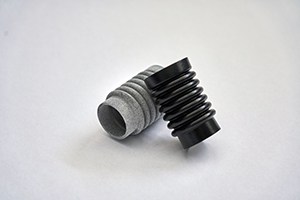Protolabs, the world’s leading digital manufacturer, has made significant strides in launching steam smoothing for 3D printed components.
About the Launch
Post-processing automation technology is a major advance for laminated molding as it further enhances the surface finish of plastic parts, even in the most complex shapes. It can be used with PA-12, a nylon material that is commonly used today, and TPU-01, a stretchable material.
Andrea Landoni, 3D Printing Product Manager at Protolabs EMEA, commented: “3D printing allows engineers to design and manufacture complex parts, ideal for low production compared to injection molding, but the surface finish of injection molding is much smoother.
“Vapor smoothing can now be used to fill gaps in additive-manufactured parts to smooth and seal even the smallest cavities on the surface.”
He continued: “This allows parts of these materials to be used in a wide range of applications that require very fine and smooth finishes for aesthetic and functional reasons.”
This process improves the mechanical properties of the part and improves rupture point elongation and impact strength. The smooth, sealed surface is also water / airtight and easy to clean.
Andrea went on to add: “Because the finishing process is automated, it can be used for much more geometry than the manual smoothing process, which can be restricted to reach areas that are difficult to access. This is a laminated molding of parts. It means that you can take advantage of all the benefits of and achieve a surface finish comparable to injection molding. “
Improved watertightness opens many applications such as tanks, fluid bearing pipes and ducts, valve covers, oil sumps, etc. Medical sector and other industrial applications benefit from the ease of cleaning with a smoother surface. Is set to.
After manufacturing the part using selective laser sintering (SLS) or multi-jet fusion (MJF), the Protolabs team moves the part to a smoothing chamber, where it heats the part to introduce the finishing agent.
Under carefully controlled conditions, the agent evaporates and the vapor spreads to all surfaces of the part. This melts, liquefies, and redistributes the material, making peaks and valleys uniform and sealing even the smallest cavities.
Andrea concludes: “Currently, this process is available on PA-12 and TPU-01 and covers many potential applications. However, we are currently testing the process for more materials, so this space Check if there are any additions in.
“This new service is only part of the complete Protolabs offering. It manages the entire process from the initial upload of your CAD to the shipping of the finished product. And a team of application engineers (support and advice along the way). Together with our engineering experts), we believe in providing services that add real value to our global customers.”
Subscribe to AM Chronicle Newsletter to stay connected: https://bit.ly/3fBZ1mP
Follow us on LinkedIn: https://bit.ly/3IjhrFq
Visit for more interesting content on additive manufacturing: https://amchronicle.com/


